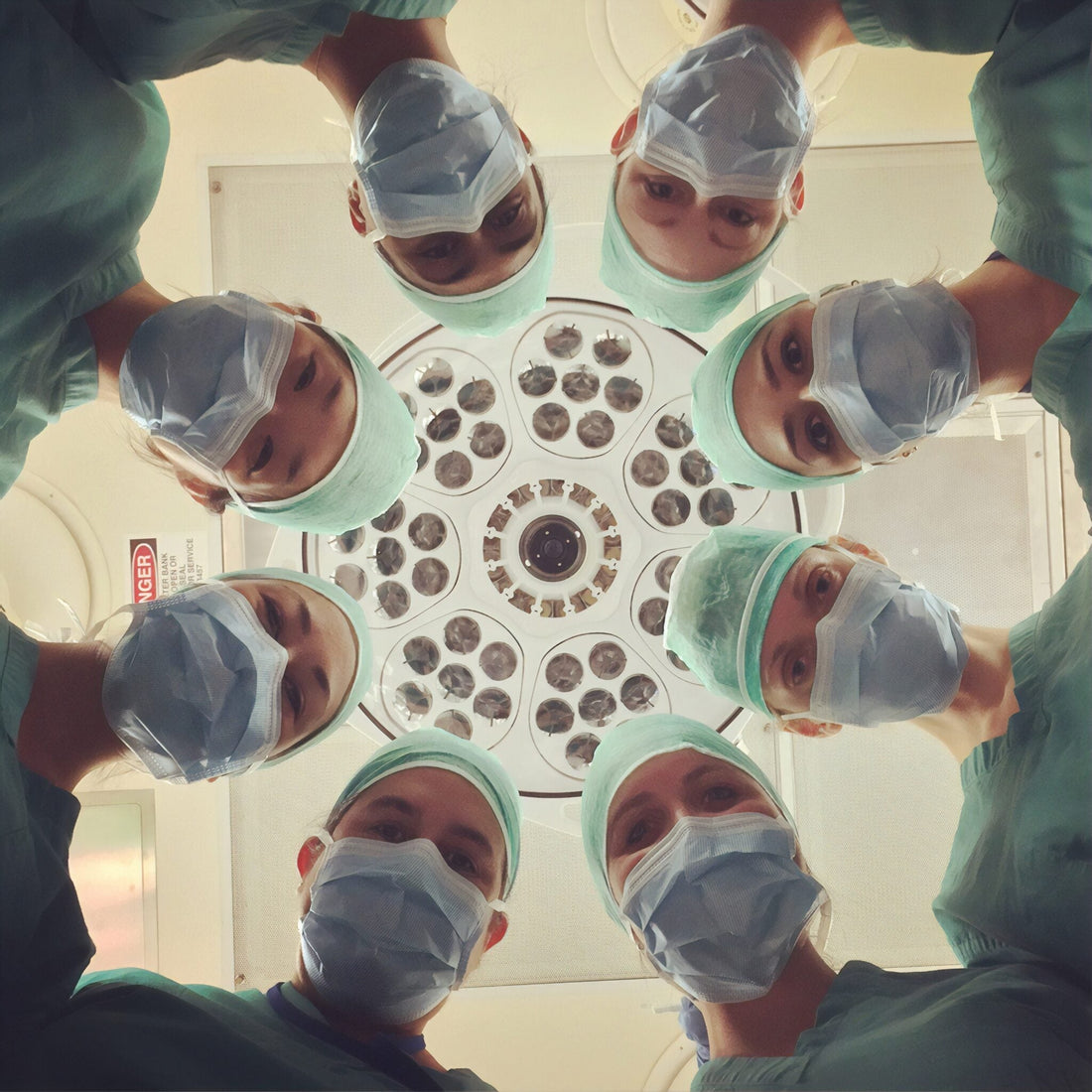
Pathognomonic signs: Definition and 13 examples
Mike MunayShare
What are pathognomonic signs?
In medicine, there are certain signs that leave no room for doubt: pathognomonic signs. These are clinical manifestations so specific that they point to a single possible disease. To put it bluntly: a headache can be due to dozens of different causes, from a cold to a migraine. On the other hand, hydrophobia (that intense fear of contact with water) is unique to rabies. Therefore, hydrophobia is a pathognomonic sign of this viral infection.
A pathognomonic sign is, by definition, a sufficient condition for establishing a diagnosis. That is, if it appears, the disease is confirmed. However, it is not always a necessary condition: a patient may suffer from the disease without ever presenting such a sign.
Due to the very nature of the diseases and the symptoms they generate, pathognomonic signs are very few. Most often, symptoms are repeated in different pathologies and overlap, forcing physicians to carefully interpret their clinical symptoms.
Medicine, moreover, is rarely that simple. Although these signs are invaluable clues, clinical symptoms can be masked and misleading. Therefore, doctors don't limit themselves to a single piece of information: they compare the signs with other symptoms, review the medical history, and support the diagnosis with laboratory tests or imaging techniques when necessary.
In short: pathognomonic signs are unequivocal markers of a specific disease. They don't always appear, and in fact, few are known, but when they do, there's no room for error.
We tell you 13 very curious pathognomonic signs.
13 pathologies and their pathognomonic signs that you should know
The rabies (virus infection RABV )
The rabies (virus infection RABV is primarily transmitted through dog, cat, or bat bites. It has two distinct pathognomonic signs. First, aerophobia or hydrophobia (fear of air currents and water currents, respectively), which manifests when a patient is hit with a small stream of air or water on the face, causing violent spasms in the muscles of the pharynx and neck. Second, the appearance of Negri corpuscles in some neurons in the human body also indicates that the patient is infected with the rabies virus. These bodies are seen as black spots in the cytoplasm of neurons, that is, in the cellular fluid between the nucleus and the cortex of infected neuronal cells.
A simple way to tell if a bat has rabies is to observe its behavior. If they collide with each other while flying, fly during the day, or fall to the ground, then they are infected.
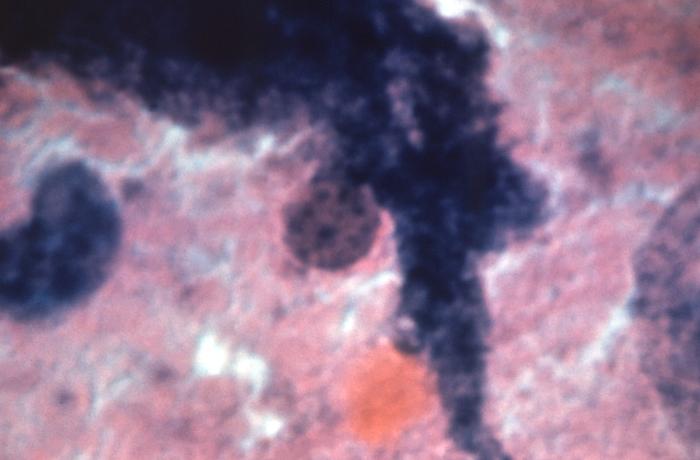
Multiple sclerosis
Multiple sclerosis (demyelinating disease), has a pathognomonic sign called Lhermitte's sign, which is a very strong electrical impulse felt from head to toe and occurs when the neck is flexed. It's a very uncomfortable sensation and very characteristic of this disease, although it can occur to a lesser extent in other similar conditions.
Lyme disease
The Lyme disease (bacterial infection Borrelia), is caused by a tick bite. It has a very defined and characteristic pathognomonic sign, which is the appearance of a Erythema migrans around the bite. This erythema consists of concentric red circles that appear on the infected skin, and its evolution is used to determine the progression and stage of the disease.
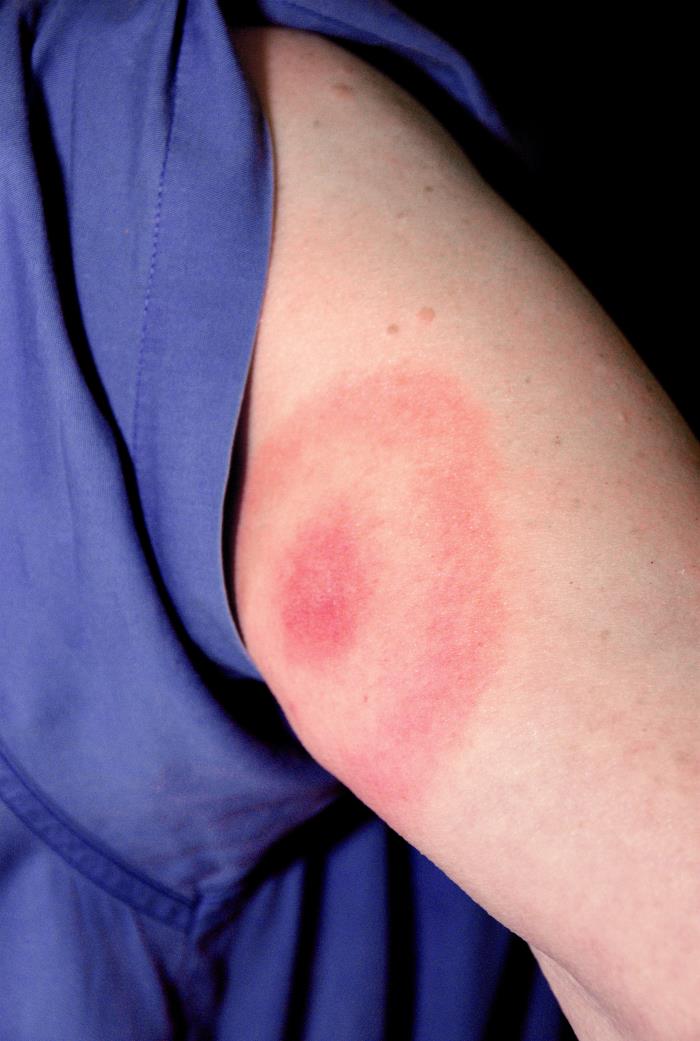
Measles
He measles (virus infection Morbillivirus) is a predominantly childhood disease. It has a pathognomonic sign that is also a precursor to the disease, since it appears in the initial phase of the illness and helps us detect and treat it earlier: Koplik's sign. This symptom is characterized by small spots that appear on the mucous membrane inside the cheeks. It appears a few days before the characteristic measles rash breaks out.
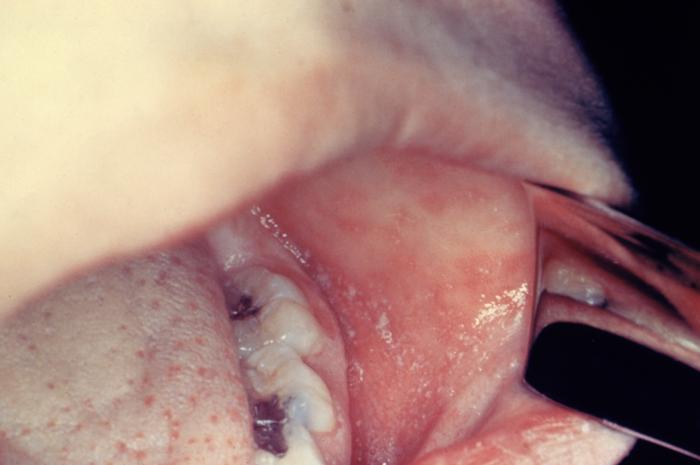
Wilson's disease
The Wilson's disease (hereditary disease autosomal recessive ), characterized by increased amounts of copper in tissues and urine. It is a very serious disease that requires lifelong treatment and a strict diet to save the patient's life, who will basically live on rice and chicken forever.
Its pathognomonic sign is the appearance of a brown ring around the cornea of the eye. This sign is called a brown ring. Kayser-Fleischer and is due to the accumulation of copper in a layer of the cornea.

Tetanus
He tetanus (infection caused by the bacteria Clostridium tetani), is a very serious disease with high mortality.
There is no cure and treatment consists solely of alleviating the symptoms.
Fortunately, it's under control in the developed world thanks to vaccines, but it still has a very high incidence in developing countries where they don't have access to vaccines or don't have the full vaccination schedule.
It has a very peculiar pathognomonic sign which is the Sardonic laughter. This symptom is characterized by an involuntary spasm of the patient's facial muscles, causing a smiling expression and raised eyebrows.
Corticospinal injury
In case of suffering a corticospinal injury, it can be easily detected thanks to the Babinski sign.
In adults and children after early infancy, the expected response to this stimulus is for the big toe to flex downward and the other toes to flex as well.
If the big toe is pointed upward and the other toes are fanned out (positive Babinski response), this may indicate a lesion or disease of the central nervous system, particularly the corticospinal tract.
Yellow fever and typhoid fever
The yellow fever (virus infection YFV ) or the typhoid fever (infection with the bacteria Salmonella Typhi ), are diseases that, although very different in nature, have a common pathognomonic sign, which is the Faget Sign.
This sign is characterized by the simultaneous development of high fever and bradycardia (low heart rate).
Faget's sign is also called pulse-temperature dissociation, since while the curve of one rises, the other falls.
Appendicitis
The appendicitis (inflammation of the appendix), is a common ailment in the population but requires urgent hospital care.
Its pathognomonic sign is the McBurney's sign , characterized by intense pain at the point of the same name. This point is located 1/3 of the way between the right anterior superior iliac spine and the navel. This point is very important because the incision is also made from there during surgery to remove the appendix.

Cholecystitis (gallbladder)
The cholecystitis It is the inflammation of the gallbladder.
It usually requires surgery to remove the gallbladder, as it tends to become inflamed due to the accumulation of stones (gallstones). Its pathognomonic sign is Murphy's sign, which is defined as the pain with apnea (respiratory pause) that the patient experiences when the inflamed gallbladder is palpated.
Pemphigus
He pemphigus (autoimmune disease), is a horrible disease caused because antibodies produced by the human body attack the skin and mucous membranes. Its main characteristic, and also pathognomonic sign, is the Nikolsky's sign, in which the epidermis of the skin and mucous membranes are seen to peel off at the slightest contact, leaving the lower layers exposed and very inflamed.
Meningitis
Meningitis (an infection of the brain and spinal cord) is a very serious illness that can be caused by multiple factors, such as viruses, bacteria, fungi, parasites, allergies, cancer, or chemical agents.
Bacterial meningitis is the most serious of all.
In all variants, there are two pathognomonic signs that indicate the presence of this disease:
- Brudzinski's sign, involuntary flexion of the hips and knees when the patient flexes his or her neck
- Kernig's sign, the patient has difficulty fully extending the leg when the hip is flexed to 90 degrees.
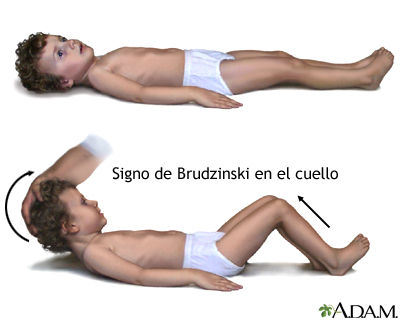
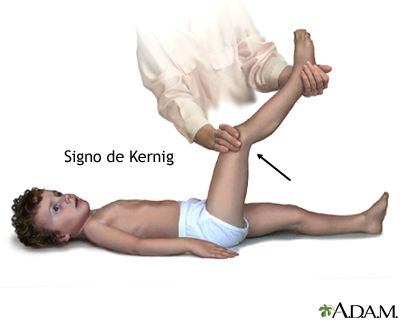
Hypocalcemia
The hypocalcemia (blood calcium deficiency) is a hydroelectrolytic disorder consisting of a lack of the necessary calcium in the blood.
It is usually caused by problems in the production of parotid hormone (PTH).
It has two clear pathognomonic signs which are: Trousseau's sign (carpopedal spasm induced by inflating a blood pressure cuff on the arm) and the Chvostek's sign (Contraction of the facial muscle by lightly tapping the facial nerve.)

Summary table of pathognomonic signs
|
Symptom |
Disease |
Guy |
| Aerophobia / hydrophobia | Rage | Viral infection |
| Negri's Bodies | Rage | Viral infection |
| Lhermitte's sign | Multiple sclerosis | Demyelinating disease |
| Erythema migrans | Lyme disease | Bacterial infection from tick bite |
| Koplik's sign | Measles | Viral infection |
| Kayser-Fleischer ring | Wilson's disease | Autosomal recessive disease |
| Sardonic laughter | Tetanus | Bacterial infection |
| Babinski sign | Corticospinal injury | Neuronal injury |
| Faget's sign | Yellow fever | Viral infection |
| Faget's sign | Typhoid fever | Bacterial infection |
| McBurney's sign | Appendicitis | Inflammatory condition |
| Murphy's sign | Cholecystitis (gallbladder) | Inflammatory condition |
| Nikolsky's sign | Pemphigus | Autoimmune disease |
| Brudzinski's sign | Meningitis | Infection due to multiple causes |
| Kernig's sign | Meningitis | Infection due to multiple causes |
| Trousseau's sign | Hypocalcemia | Hydroelectrolytic disorder |
| Chvostek's sign | Hypocalcemia | Hydroelectrolytic disorder |
Do you know any other pathognomonic signs? Leave them in the comments 🙂
Share if you want a part II
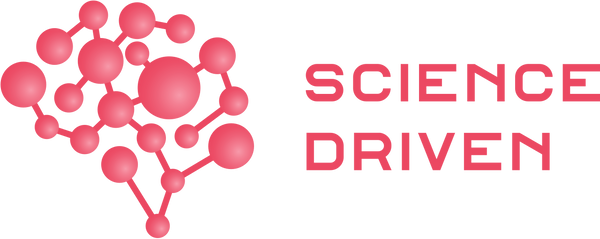
1 comment
El artículo me ha parecido muy interesante y ameno.